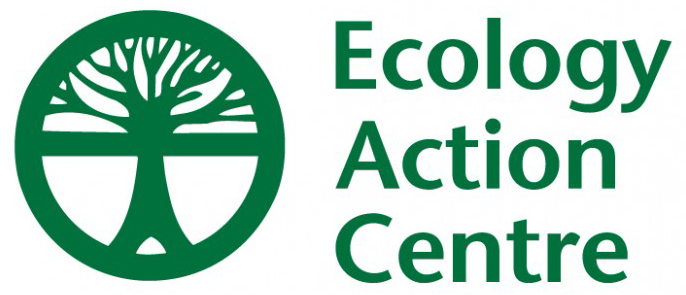The underwater meadows formed by seagrasses create habitat for many marine species, support commercially and culturally important fisheries, and help fight climate change by sequestering carbon and protecting our coasts from storm surge and erosion. However, seagrass meadows are declining globally due to human activity, with roughly 20 per cent lost since 1880. In Canada, the main species of seagrass on all three coasts is eelgrass (Zostera marina).
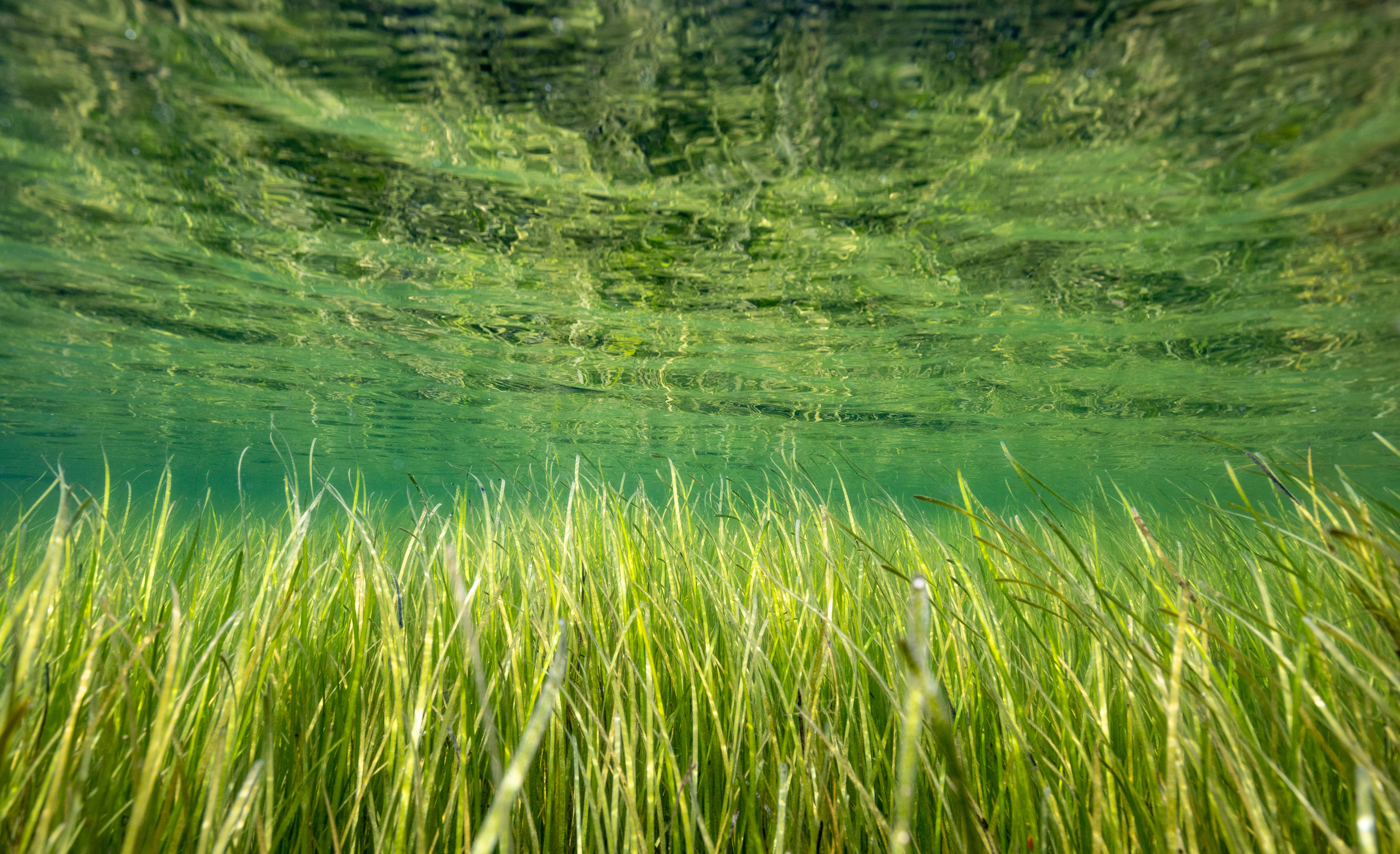
An eelgrass meadow near Owl’s Head on Nova Scotia’s Eastern Shore.
In Atlantic Canada, eelgrass meadows border much of our coastline in shallow, sheltered bays. The Ecology Action Centre works to draw attention to the importance of healthy eelgrass meadows for Nova Scotia’s coastal ecosystems, fisheries, and communities. We partner with local organizations to undertake eelgrass stewardship projects and directly engage citizens in mapping and monitoring. We support research that seeks to fill important knowledge gaps, particularly related to eelgrass meadows as a nature-based climate solution (“blue carbon”) and the feasibility of eelgrass restoration. We conduct policy research and advocate for protection of eelgrass meadows using a variety of different tools. Lastly, we bring together people from all sectors and backgrounds to share information, build collaborations, and enhance our collective ability to conserve this valuable but underappreciated coastal habitat.
Citizen Science
Citizen Science
Eelgrass conservation starts at the local level and requires support and involvement from many different communities and individuals. Since 2019, we have been recruiting citizens from coastal communities throughout Nova Scotia to help collect observations of eelgrass meadows. These observations help us map the distribution and health of local eelgrass.
We accomplish this in two ways. First, we recruit and train experienced sea kayakers to collect photographs and data from their kayaks using a GoPro camera and a smartphone tracking app. The data is processed by volunteers and made publicly available so anyone can access and use it. So far, the data collected by our citizen scientists has been used in mapping and research projects by Fisheries and Oceans Canada and Dalhousie University.

Map showing the locations where EAC-trained paddlers have collected citizen science eelgrass data
Second, we encourage beach-goers and all ocean users to take photos of eelgrass in their local waters – for example, during a low-tide walk – and submit them to the EAC Eelgrass Mapping Project on the citizen science app iNaturalist. Anyone can sign up for iNaturalist, join our project, and connect with people looking out for eelgrass meadows throughout the province!
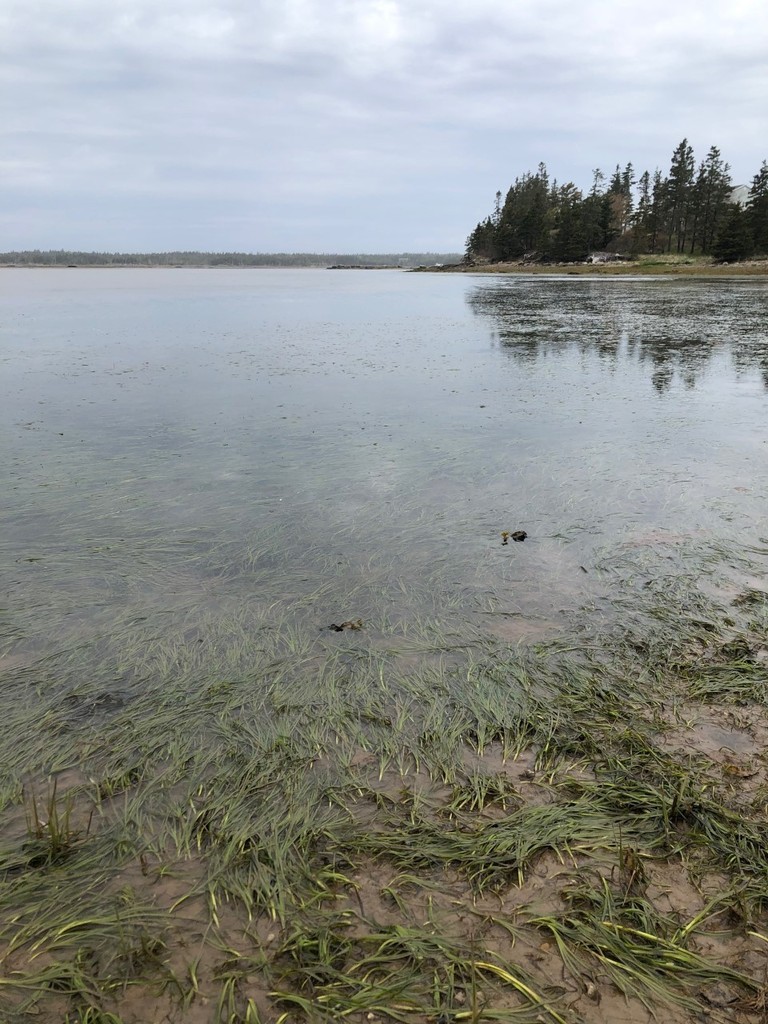
An eelgrass meadow at low tide near East Chezzetcook, Nova Scotia.
Blue Carbon
Blue Carbon
Seagrasses like eelgrass can capture and store significant amounts of carbon in sediments held in place by their roots and rhizomes. As a result, healthy eelgrass meadows may be an important nature-based climate solution that can help reduce greenhouse gas accumulation in the atmosphere. However, more research is needed as it is not always clear how much carbon is stored in eelgrass meadows or for how long, and there can be a lot of variation from place to place. We work closely with academic partners and local watershed organizations to improve our understanding of carbon sequestration in Atlantic Canada’s eelgrass meadows. We are currently working with the Future of Marine Ecosystems lab at Dalhousie University, as well as Fisheries and Oceans Canada, to take core samples at sites throughout the Maritimes to help answer these and other important questions.
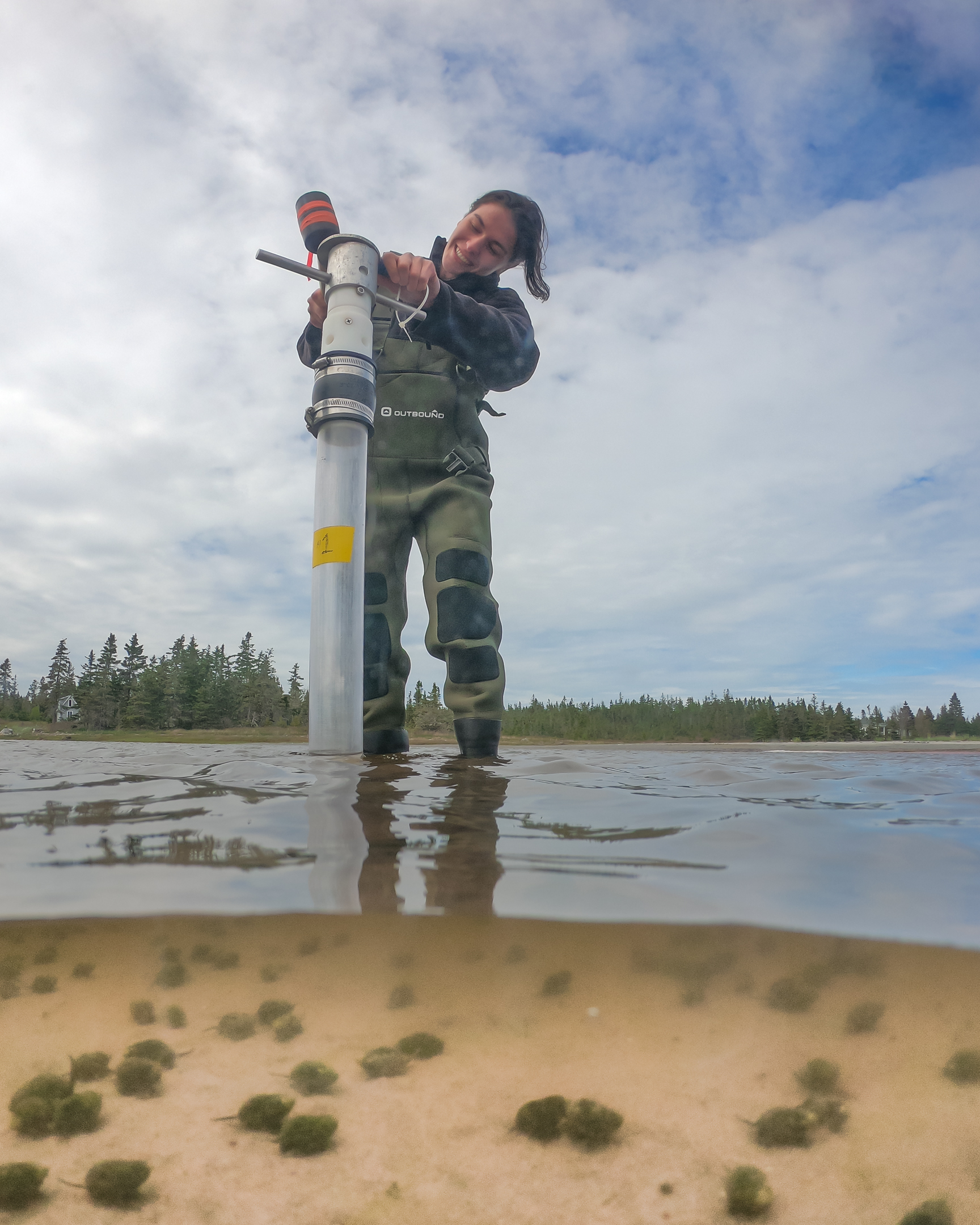
Our summer student, Lauren, co-supervised by Dalhousie University, testing a coring device to study carbon sequestration in Nova Scotian eelgrass meadows.
Mapping & Restoration
Mapping & Restoration
Having accurate information on the distribution and health of eelgrass meadows is critical for successful conservation and management. Unfortunately, this is still a major gap in most of Atlantic Canada. We work with a variety of partners to help build a base of spatial information about eelgrass meadows to guide planning and conservation activities. This can take many forms including in-water surveys of small areas by snorkel or kayak and drone surveys of larger areas. We have also contributed to the analysis of satellite maps by Fisheries and Oceans Canada by providing citizen science photographs. These photographs help confirm how reliably we can identify eelgrass meadows in satellite imagery, which has the potential advantage of covering entire bays at one time.
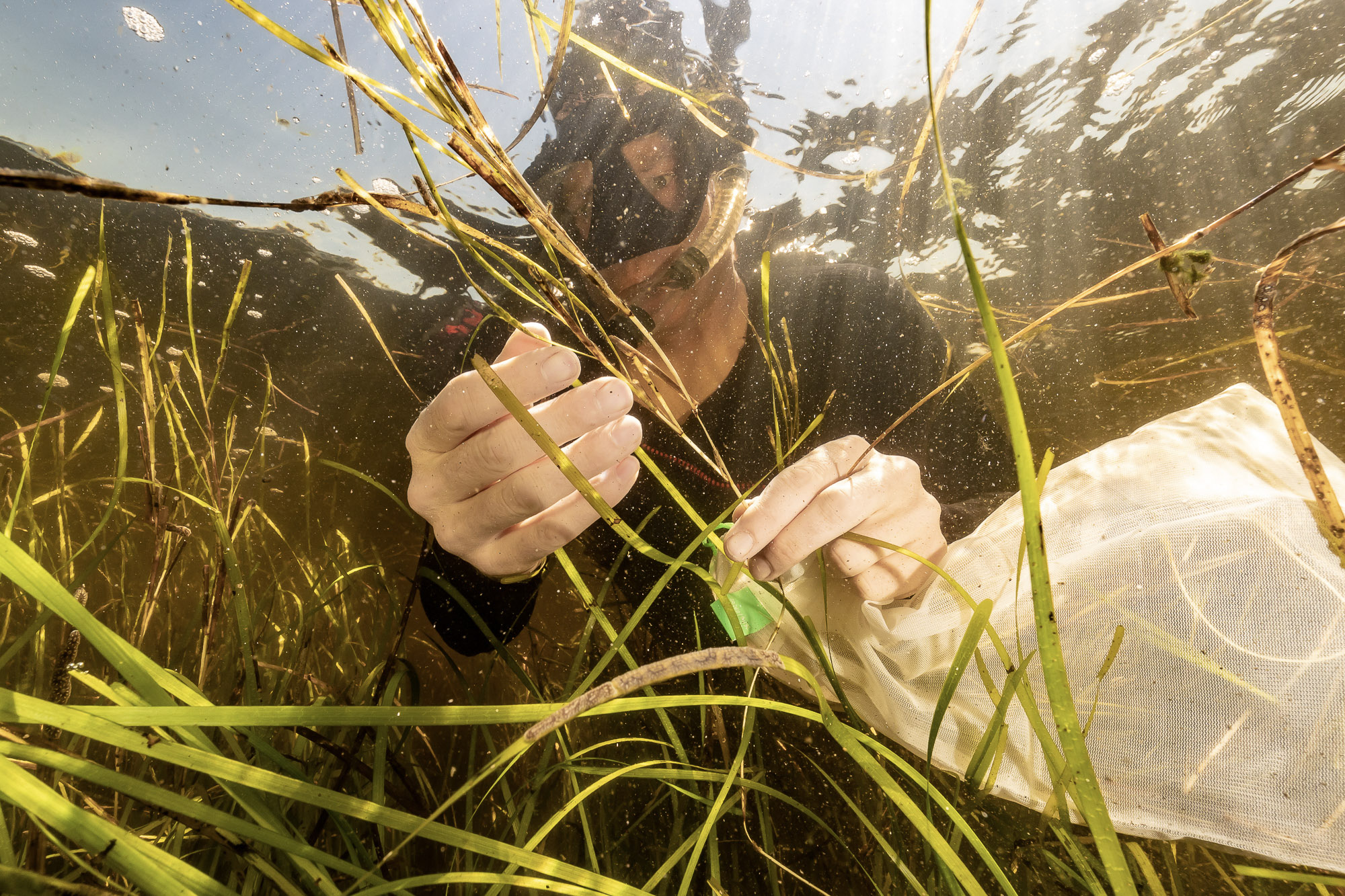
Harvesting reproductive shoots and seeds from a donor bed to transplant to the degraded area in Port Medway
We are also in the early stages of a pilot eelgrass restoration project in Port Medway, Nova Scotia. Restoring damaged seagrass meadows is possible, but it is tricky work with a mixed track record. Working closely with academic partners at Dalhousie University, we are comparing the effectiveness of several restoration methods in an area where eelgrass meadows died back over the past few years. The goal of this project is to improve our understanding of the feasibility of eelgrass restoration as a management tool while helping this specific meadow recover from past disturbances. We are also connecting with partners throughout Atlantic Canada to develop a report on eelgrass restoration based on the small number of projects that have been attempted so far. Check back here for updates throughout 2022!
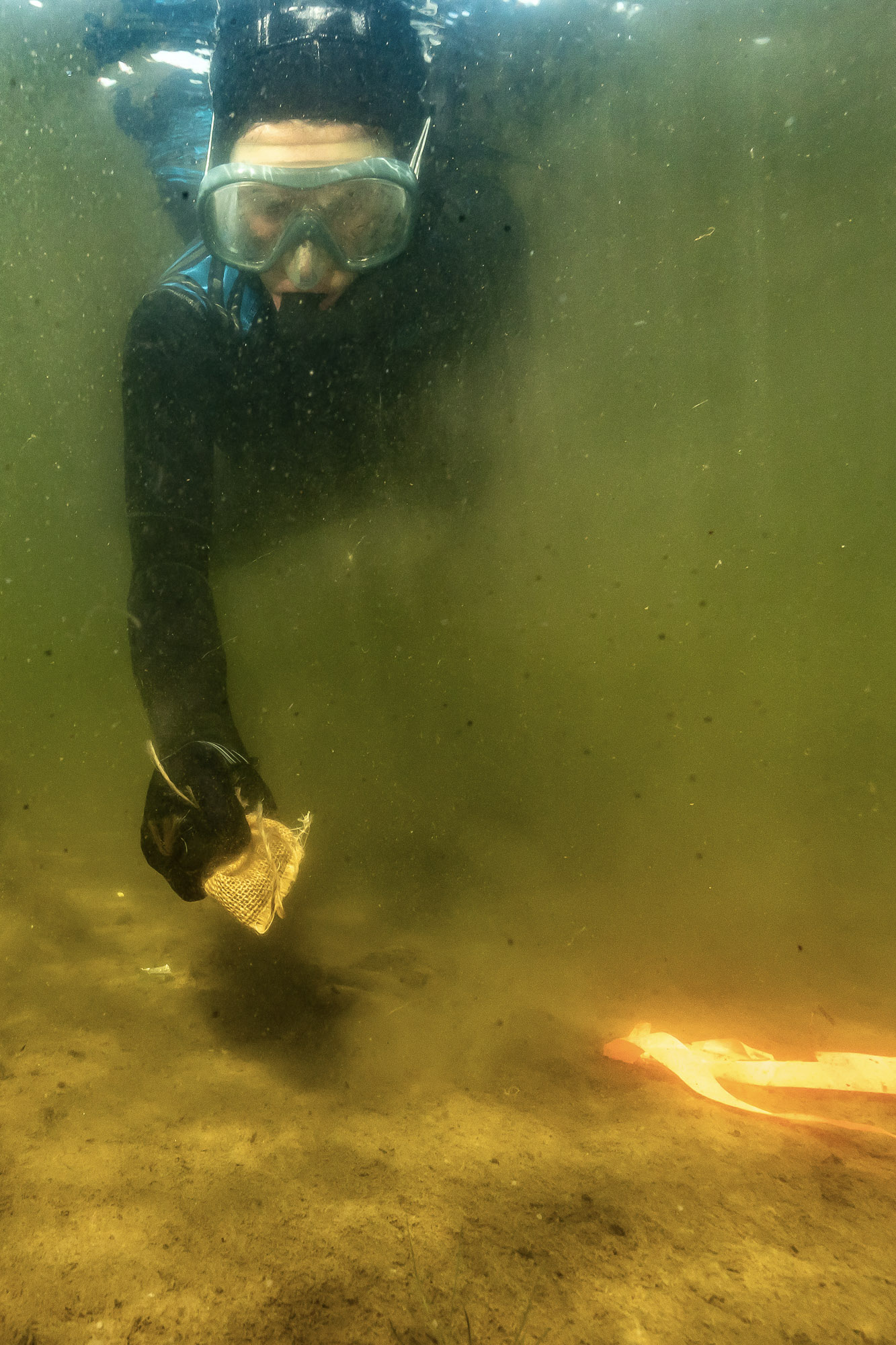
Planting eelgrass seeds in small burlap bags at the degraded site to try and seed a new bed
Convening & Collaboration
Convening & Collaboration
Since 2019, we have convened the Nova Scotia Eelgrass Working Group. With approximately 45 members from government, academia, Indigenous and non-Indigenous community organizations, and the environmental sector, this group meets every few months to share information, build collaborations, and explore key topics related to eelgrass ecology and conservation. The goal of this work is to build our collective capacity to better understand, manage, and protect eelgrass meadows in Nova Scotia.
Policy & Management
Policy & Management
We seek to identify and implement policy options across all three levels of government to help mitigate threats to eelgrass meadows. We are undertaking research to better understand how other jurisdictions mitigate the threats that face eelgrass meadows and examine what might be applied in the Atlantic Canadian context. We also work with partner watershed organizations to explore the designation of some eelgrass meadows in Atlantic Canada as Ecologically Significant Areas under the Fisheries Act, which would offer protection against site-specific threats. This work is still at an early stage. Please check back throughout 2022 and 2023 for updates!
